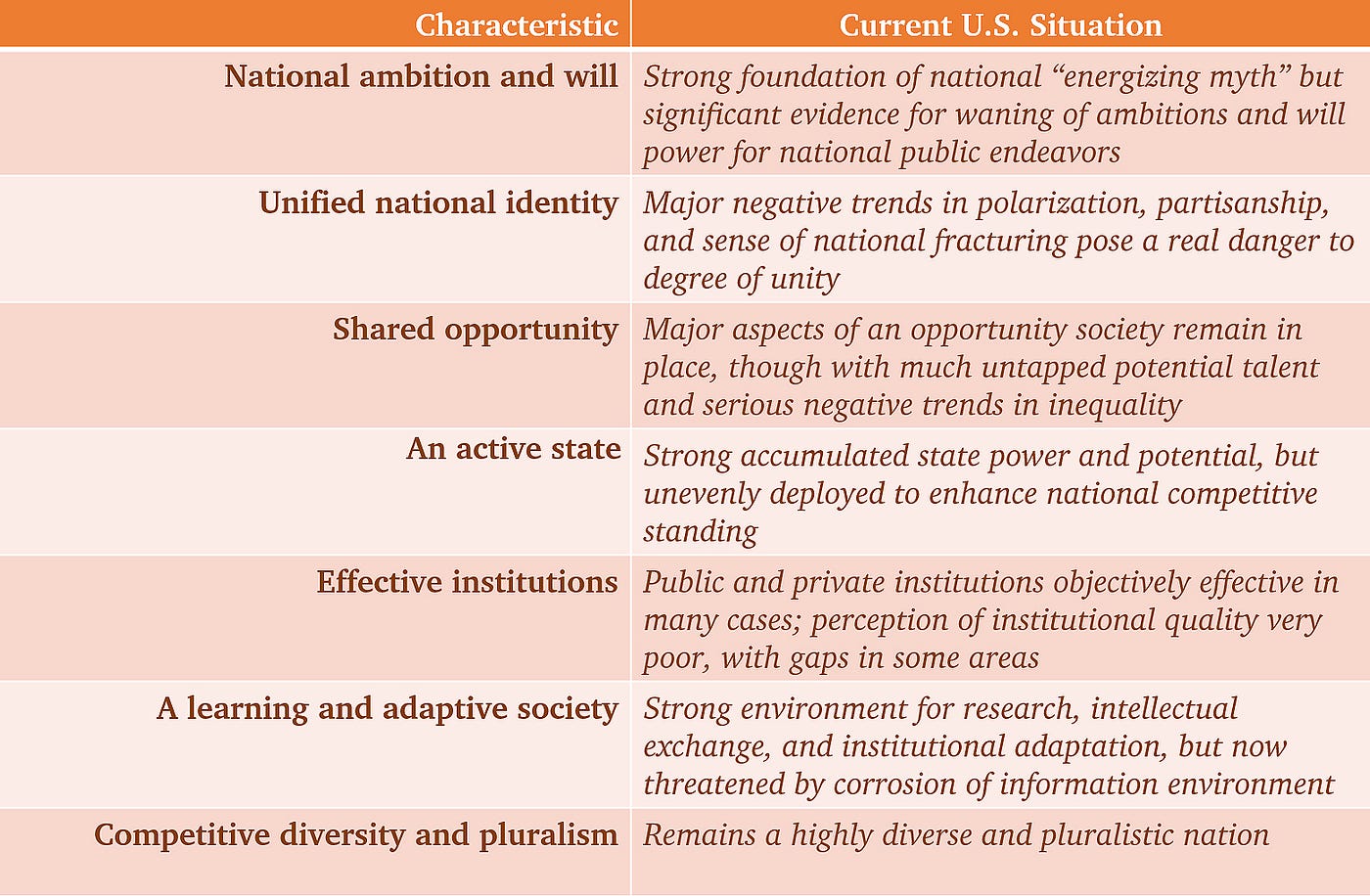Frank F Islam
This nation came into being because it won The Revolutionary War fought with Great Britain from 1775 to 1783. The United States of America itself was officially established in 1787 with the signing of the Constitution.
In the decades and centuries since then, citizens have won hard-fought battles for equality in An Evolutionary War to create the “more perfect union” envisioned in the preamble to the Constitution. In 2022, we are in the midst of A Devolutionary War being fought to move the nation backward rather than forward.
The Devolutionary Trajectory
This devolutionary trajectory has been going on for some time. In April and May of 2020, we published a three-part series on the “era of repression and regression” threatening our American democracy.
We thought that changing the president in the national elections of that year might alter our devolutionary trajectory, but it has not. As we noted in June, our democracy continues to fragment.
An article by E. J. Dionne, Jr. and an article by David Ignatius published in the Washington Post on the 4th of July weekend caused us to reflect again on the status of America’s devolution — and what it means for its future. Dionne explores the judicial concepts of “originalism” and “strict construction” and concludes:
Together, “originalism” and “strict construction” reflect an effort to invoke the Constitution to tether the country to the past. Both have been used to roll back democratic advances such as the Voting Rights Act and campaign finance reforms as well as regulatory achievements on the environment and labor rights that in many cases date back a century or more. Now, we are torn asunder about guns, abortion, and saving our planet.
Ignatius focuses on an important new study titled The Societal Foundations of National Competitiveness (Societal Foundations Report or Report), authored for the Department of Defense Office of Net Assessment by Michael J. Mazarr, a senior political scientist at the Rand Corporation. Ignatius points out that
Mazarr’s disturbing conclusion is that America is losing many of the seven attributes he believes are necessary for competitive success: national ambition and will; unified national identity; shared opportunity; an active state; effective institutions; a learning and adaptive society; and competitive diversity and pluralism.
Dionne and Ignatius’ articles indicate the devolutionists have scored a one-two punch and the evolutionists are on the ropes. We concur with their assessments.
The retrograde movement of the Supreme Court is particularly insidious. As we observed in our blog posted earlier this month, the Supreme Court, controlled by a “right wing” conservative majority, has become a principal vehicle for accelerating the degradation of our American democracy.
We first shared our perspective on the nation’s competitiveness in our book, Renewing the American Dream: A Citizen’s Guide for Restoring Our Competitive Advantage, published on July 4, 2010. In Renewing, we stated the first decade of this century had been one of significant decline for the U.S., examined the dimensions of that decline, and provided recommendations for reversing it.
Unfortunately, there was no improvement in the second decade of the century. The cover page of the Sunday Review section of the New York Times for December 29, 2019 labeled 2010–2019 “A Decade of Distrust.” In a special opinion piece on December 26, 2019, six Washington Post columnists provided their words describing the decade of the 2010s. The labels they applied included “unraveling,” “anxiety,” and “dissonance.”
We labeled this past decade a decade of loss for the U.S. Loss of faith in our political systems, our government, our institutions, and each other. Loss of hope in the American dream and democracy. Loss of charity toward others less fortunate and immigrants to this nation.
To date, this third decade of the 21st century has brought few gains to offset those losses. The Societal Foundations Report provides excellent insights into the current status of the not-so United States of America.
The Report is over 400 pages long, with a chapter devoted to each of the seven societal characteristics identified as fundamental to providing a nation’s competitive advantage. It is the product of extensive research and analysis and took a year to complete. Several experts and scholars assisted Michael Mazarr in doing this work and writing the Report.
The key findings on the seven societal characteristics are listed in the table below:

A review of these findings is definitely concerning. Even more concerning is the following commentary that the Report provides regarding the U.S.’s current overall condition:
Indeed, a worrisome pattern throughout these assessments is that most U.S. strengths that emerge across the characteristics derive from momentum and past dependence, not new energy, ideas, or initiatives. This initial, tentative assessment suggests that the United States may be living off its accumulated social strengths rather than actively nurturing and advancing them.
That is a very broad generalization. It does not apply to every social issue, government agency, or private-sector firm. Yet evidence across many characteristics associated with national dynamism and competitive position does raise this worrisome possibility. This is reflected, in part, in the generalized pattern of stagnation in many of the indexes we examined.
There is quantitative polling and qualitative evidence for the conclusion that the American competitive advantage is weakening, that the U.S. societal condition betrays an overarching sluggishness, lack of dynamism, and inertia. This pattern shows up across many indicators. It has been evident in slowing economic growth and stalled productivity, an economic picture some have described as “secular stagnation.” It shows up in a decline in productive investment, especially in new technologies. It appears to be evident in the level of business entrepreneurialism and new business energy.
The Need for A Renewal Agenda
The Report’s findings and analysis align with and reinforce the data and assessments we have been sharing in our writings for over a decade now. It paints a grim, but not irreversible, portrait of a devolving United States.
The last chapter of the Report ends with a section describing the “Potential for an American Competitive Renaissance.” It suggests that central to realizing that potential would be “…some form of a new national project, an agenda for national renewal based on an assessment of the factors that underwrite an engine of dynamism.”
It states that a national renewal agenda would most likely include:
- a renewed commitment to shared opportunity and to unleashing the national creativity and power that resides in underserved and underachieving parts of the population
- an unapologetic celebration of an American national community and spirit — a restatement and recommitment to the “energizing myth” of American society
- a somewhat stronger and more consistently active role for the state, but one that is precisely targeted based on the best available evidence of what interventions bring the most return on investment
- policies to encourage more-productive use of capital and less emphasis on such objectives as short-term boosts in stock price, including avenues to making capital more broadly available to a wider number of people and smaller firms
- improved investment in the core elements of a learning and experimenting society, from research and development to research institutes and new models of education
- a new war against bureaucratic excess and administrative constraints on creativity in the private and public sectors
- a much more urgent program to combat mis- and disinformation in society, better equip citizens to be critical information consumers, and strengthen the sources of sound and accurate versus misleading data.
These recommendations provide the broad framework for a renewal agenda. They do not, however, outline the specific actions or the details that would be necessary to develop and implement one successfully.
Such an agenda would be as relevant and, in the long-run, more important than documenting America’s current problems. Perhaps the Department of Defense can support funding creating this agenda as a follow-up to the Rand study.
If it does, a starting point for reference could be our book Renewing the American Dream. In Renewing, we set out 60 specific recommendations in seven key result areas for restoring the American Dream and this country’s competitive advantage. We provide an additional 19 recommendations in a companion book, Working the Pivot Points: To Make America Work Again.
Even if there is a follow-up study with solid action plans, it would be insufficient by itself to move the United States off the devolutionary path that it is on today. This is due to the fact, as we observed in our first blog of this year, that we are becoming “The Island States of America.”
In these Island States, states rights dominate and the country itself is increasingly balkanized. The U.S. Constitution provided the basis for the elevation and supremacy of states rights. The Trump administration took advantage of this in order to reverse-engineer the nation.
In 2017, at the outset of the Trump presidency, we asserted that the United States was in a nearly “apocalyptic state.” That state was being created, in part, by the subjugation of the role that the federal government played in decision-making and direction-setting to hold the United States together.
Trump’s island states approach to governing for four years, followed by the refusal to accept the results of a legitimate election and allow the peaceful transfer of power, combined with the continued perpetuation of the Big Lie, emboldened by a cult-like following of tens of millions of citizens and strengthened by a divisive Supreme Court, have made the current state of this nation much more apocalyptic than it was nearly five years ago.
If the current course we are on is not changed in the near future, there will most probably continue to be a United States of America, but it will be united in name only.
The Need for A Second Revolutionary War
Is it possible to change this devolutionary downhill slide?
We absolutely thought it was at the outset of this year, and still believe it is today. As we stated earlier, much will be required to accomplish that. Three key ingredients must be:
A national leader with a compelling vision and cross-cutting appeal and support. Barack Obama was such a candidate and president. His message in his initial campaign, “Change you can believe in,” was simple and drew people of various stripes and persuasions to him because of its non-partisan nature. In his 2008 race, Obama received 9% of his vote nationally from Republicans and 52% from independents. Ballotpedia identified 206 counties that Obama carried in 2008 and 2012 that Trump won in 2016.
21st century citizens who are American patriots and community builders. These will be concerned citizens who view America’s division and the anti-democracy trend with alarm and will be ready to come together to build the nation’s social capital and the common good. As American patriots, they will pledge allegiance not to a flag, a religion, or a race but to the call from the founding fathers to work always to craft “a more perfect union.” They will link arms to unite America, not take up arms to divide it. They will commit to building bridges between us and not walls.
A unity agenda around which citizens can rally. That agenda will reinforce faith, confidence, and competence in government at all levels. It will spell out how the federal, state, and local levels of government multiply the capacity of the United States and do not detract from it. It will demonstrate the benefits that have been achieved through unity. At a minimum, it will incorporate the following elements we outlined in a 2020 blog as essential to preserving our American democracy: the American dream; federal government; civic life; civic learning and engagement; and the public health system.
Because of the current political, economic, and social climate of our country, an evolutionary approach to beat the devolutionists will not win. It will require citizens who are willing to participate in a revolutionary war.
The first revolutionary war was fought for independence from another nation. This second revolutionary war must be fought for interdependence with each other.
The first revolutionary war was fought with muskets to confirm the self-evident truths that all men are created equal, that they are endowed by their creator with certain unalienable rights, that among these are Life, Liberty and the pursuit of Happiness. This second war must be fought with mindsets to reaffirm those truths exist for all and not just for those who are white, privileged, or male.
21st century citizens should recognize that many of the devolutionists are cultists who have embraced the past and separatism, and therefore are not persuadable. Time should not be devoted to arguing with them but to talking with those who will listen, hear, learn, and take action.
21st century citizens should not fight this war against the radicals and extremists who would resort to violence in an attempt to achieve their seditious ends. They should let the police and military confront those outliers.
It should be understood that this will not be an easy war, but it is an essential one because it is a battle for the heart and soul of this country. It is a struggle between autocracy and democracy — prevailing in it will require patience and persistence.
On December 23, 1776, during the Revolutionary War, Thomas Paine wrote, “These are the times that try men’s souls. The summer soldier and the sunshine patriot will, in this crisis, shrink from their service, but he that stands by it now, deserves the love and thanks of man and woman.”
In July of 2022, we are confronting another crisis. As Pulitzer Prize-winning historian Jon Meacham said to Joe Scarborough on Morning Joe on July l before this year’s July 4 holiday, “If we break the United States, we don’t get it back.” Meacham also said preventing the U.S. from being broken “…will require true patriots who understand that patriotism isn’t passive.”
Patriotism in 2022 demands getting engaged in this revolutionary war. There is no place on the battlefield for summer soldiers or sunshine patriots.
Winning this war will ensure that America stays unbroken. This will allow us to return to working together in the evolutionary war to create “a more perfect union.”
And, after that is accomplished, we can celebrate America’s Independence Day and its new holiday, Interdependence Day.





0 Comments